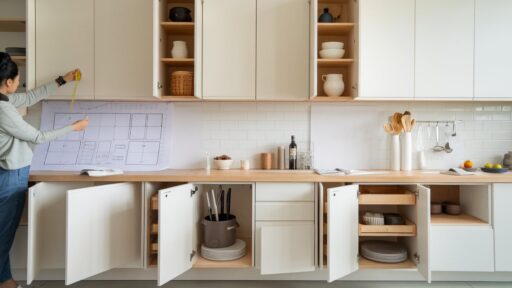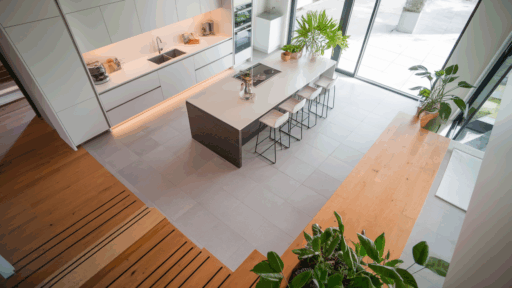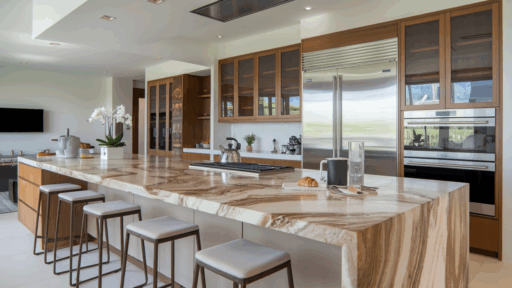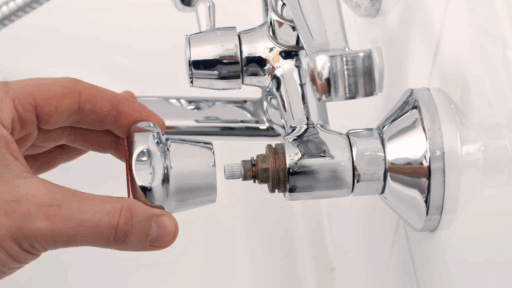Vinyl windows are a popular choice for homeowners who want to replace old windows without spending a lot. They’re made from a strong plastic called PVC and are known for being low-maintenance, energy-efficient, and budget-friendly.
These windows have a clean, modern look that works well in many homes. They don’t need painting or staining, and they hold up well in most weather.
You’ll also find that they help with energy bills by keeping heat in during the winter and out during the summer.
But like anything, vinyl windows have their downsides. They’re not as strong as wood or fiberglass and may not be the best pick for all climates.
In this article, I’ll go over what vinyl windows are, their pros and cons, the types you can choose from, and how to know if they’re a good fit for your home.
What Are Vinyl Windows?

Vinyl windows are made from a type of plastic called polyvinyl chloride, or PVC. This material is known for being strong, lightweight, and resistant to moisture.
Instead of using wood or metal, vinyl frames are molded from PVC to create durable window units that can stand up to harsh weather and regular use.
Unlike wood, vinyl doesn’t rot, and unlike metal, it doesn’t rust. That’s one reason why vinyl has become such a common window material in homes across the country.
First introduced in the U.S. in the 1970s, vinyl windows grew in popularity thanks to their low cost and ease of installation. Today, vinyl windows are often used in new construction, home renovations, and energy-efficient upgrades.
They come in many styles, sizes, and colors, making them a flexible option for almost any room.
Different Types of Vinyl Windows
I’ve found that vinyl windows come in many shapes and styles to suit different rooms and uses. I like that there’s usually a vinyl option that fits just right for any space.
1. Single-Hung and Double-Hung

Single-hung and double-hung windows are two of the most common styles found in American homes.
In a single-hung window, only the bottom sash moves while the top remains fixed.
Double-hung windows allow both sashes to slide up and down, offering better airflow and making them easier to clean from inside.
While double-hung options are more convenient and versatile, single-hung windows tend to be a bit more affordable.
2. Casement and Awning

Casement and awning windows are great choices for areas where airflow and space matter.
Casementwindows are hinged on the side and swing open like a door, while awningwindows are hinged at the top and open outward from the bottom.
Both styles offer excellent ventilation and seal tightly when closed, helping with energy efficiency. They’re especially useful in kitchens and bathrooms, where you need fresh air but may not have a lot of wall space.
3. Sliding and Picture Windows

Sliding and picture windows are great options for bringing light and openness into a room.
Sliding windows move side to side and work well in wide spaces where there isn’t much vertical room.
Picture windows, on the other hand, don’t open at all, but they offer an unobstructed view and let in lots of natural light.
Both styles are ideal for living rooms, dining areas, or any spot where you want to highlight the view.
4. Custom and Specialty Shapes

Vinyl windows aren’t limited to standard shapes – they can be made in custom designs like circles, arches, and octagons to match your home’s style.
Bay and bow windows, which extend outward and often create cozy seating nooks, are also available in vinyl.
These specialty options add charm and architectural detail without the higher cost of wood, making them a great way to upgrade your space affordably.
Quick Vinyl Window Comparison Table
| Type | Main Feature | Best For | Ventilation | Cost Range |
|---|---|---|---|---|
| Single-Hung | Bottom sash moves; top is fixed | Bedrooms, budget renovations | Moderate | Lower |
| Double-Hung | Both sashes move for airflow and easy cleaning | Living areas, upper floors | High | Moderate |
| Casement | Side-hinged; opens outward like a door | Kitchens, hard-to-reach spots | Excellent | Moderate to High |
| Awning | Top-hinged; opens outward from the bottom | Bathrooms, rainy climates | Good | Moderate |
| Sliding | Slides horizontally; ideal for wide spaces | Living rooms, patios | Good | Moderate |
| Picture | Fixed window with no moving parts | Scenic views, large walls | None | Low to Moderate |
| Custom/Specialty Shapes | Unique shapes like circles, arches, bay/bow | Accent areas, front-facing views | Varies | Varies (mod. to high) |
I’ve found that no matter the shape or style, vinyl windows give you flexibility without losing functionality. I like how easy it is to find the right type to match your space and your needs.
What Are the Benefits of Vinyl Windows?
Vinyl windows have several key advantages that make them attractive to homeowners. These benefits go beyond just price; they also help with comfort, convenience, and long-term value.
Energy Efficiency
One of the biggest selling points for vinyl windows is their ability to help insulate your home. The PVC frames reduce heat transfer, meaning your home stays warmer in the winter and cooler in the summer.
Many vinyl windows come with double- or triple-pane glass, low-E coatings, and argon gas fills, all of which contribute to energy savings.
This added efficiency can lead to lower heating and cooling bills over time. For homeowners looking to make eco-friendly upgrades, vinyl windows are often an easy choice.
Low Maintenance
Unlike wood windows, which may need to be sanded, painted, or sealed regularly, vinyl windows require almost no maintenance.
You can clean them with mild soap and water; no special tools or chemicals are needed. They don’t peel, blister, or flake like painted wood, and they’re highly resistant to moisture.
That makes them ideal for damp areas like bathrooms or coastal climates where salt and humidity are a concern.
Cost-Effective
Vinyl windows are generally more affordable than their wood, fiberglass, or aluminum counterparts.
If you’re replacing several windows at once, the savings can really add up. Despite the lower price, many vinyl windows still offer solid performance and warranty coverage.
This cost advantage makes vinyl a great option for budget-conscious homeowners or for rental properties where keeping costs down is important.
Versatility and Appearance
Vinyl windows come in many styles, from traditional double-hung to modern casement or sliding windows.
They’re also available in a variety of colors and finishes, including wood-look laminates for those who want a classic touch without the maintenance.
Because vinyl is so easy to mold, it’s possible to create custom shapes and sizes to match your home’s design.
What Are the Drawbacks of Vinyl Windows?
Vinyl windows have a lot of great features, but they’re not perfect for every home. I think it’s important to look at both the pros and the cons before making a decision. Here are a few downsides to keep in mind:
- Limited Color Options: Most vinyl windows come in basic factory colors like white or beige.
- Not Paintable: You can’t easily change their color if your home’s exterior style changes.
- Less Design Flexibility: Customization is limited compared to wood or aluminum windows.
- Lower Durability: Vinyl isn’t as strong or long-lasting as premium materials like fiberglass.
- Heat Issues: It can warp or fade in extremely hot climates.
- Expansion and Contraction: Temperature swings may affect long-term fit and performance.
- Not Eco-Friendly: Vinyl is plastic-based and not biodegradable.
- Limited Recycling Options: Disposal isn’t as green as with some alternative materials.
Knowing these potential drawbacks can help you decide if vinyl windows are the right fit for your space and priorities.
Choosing the Right Vinyl Window
Picking the right vinyl window comes down to more than just looks. I always start by thinking about the room it’s going in and what I need most – good airflow, natural light, or just a better view.
From there, I look at the window style that fits best, like double-hung for easy cleaning or casement for better ventilation. Size and shape matter too, especially if you’re working with a unique space.
It’s also smart to check the energy ratings and frame thickness to make sure you’re getting good insulation. I like to choose a color and finish that blends well with the rest of the home, keeping in mind that vinyl can’t be painted later.
Taking time to compare features and warranties can really pay off in the long run.
Conclusion
Vinyl windows are a great choice if you want something simple, affordable, and practical for your home. They’re known for being energy-efficient and easy to maintain, which means less work and lower utility bills.
I like how they come in many different styles, so it’s easy to find one that fits just right with your space.
While they may not last as long as some high-end wood or fiberglass options, vinyl windows still offer solid performance and good value for the price.
They won’t peel, chip, or require repainting, which is perfect if you want low-maintenance upgrades. I’ve found they work well in nearly every room, from kitchens to bedrooms.
Just be sure to pick a trusted installer and check out all the style options first. With the right fit, vinyl windows can give your home a fresh, updated look without breaking your budget.








